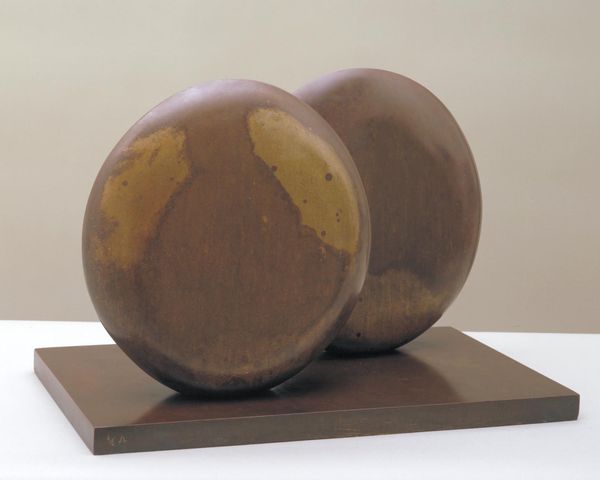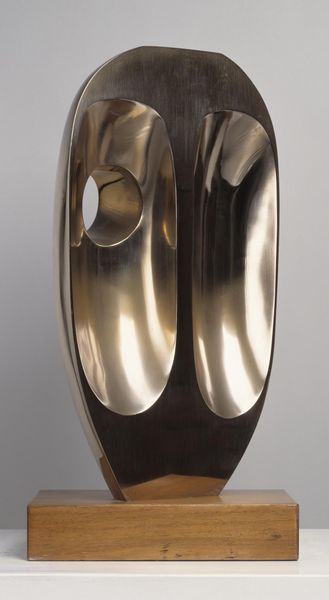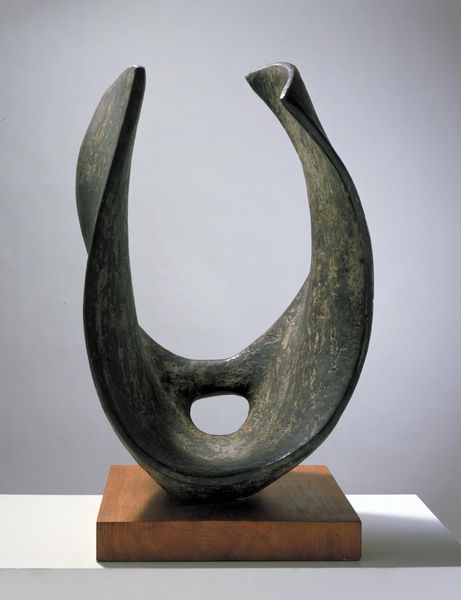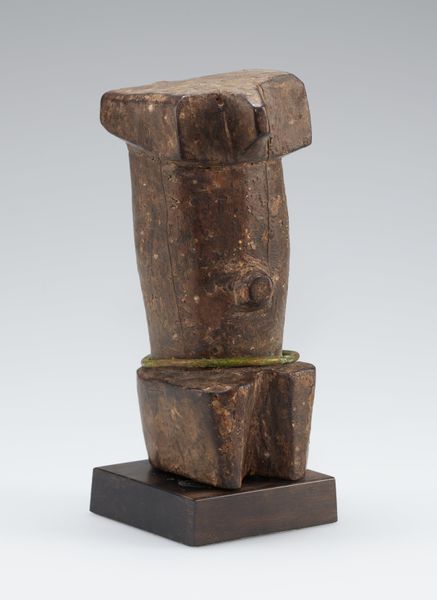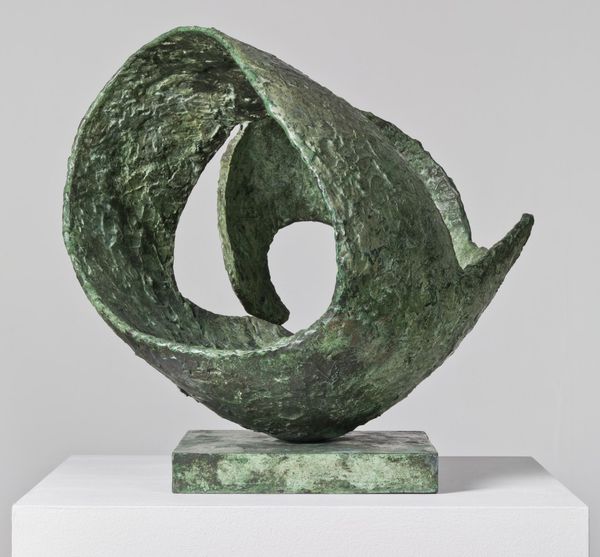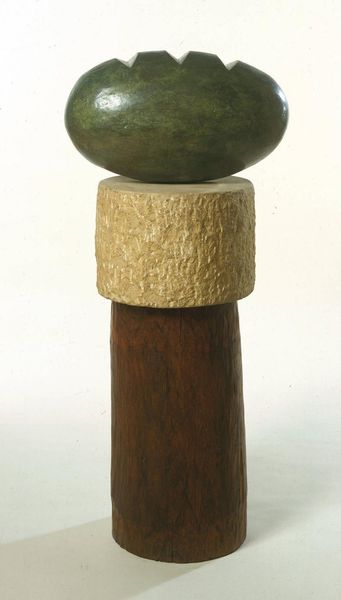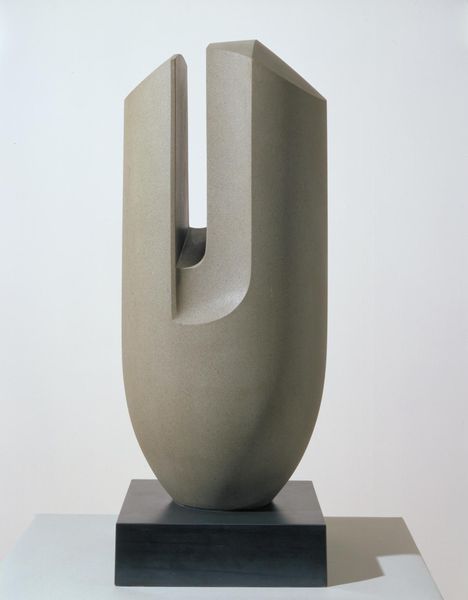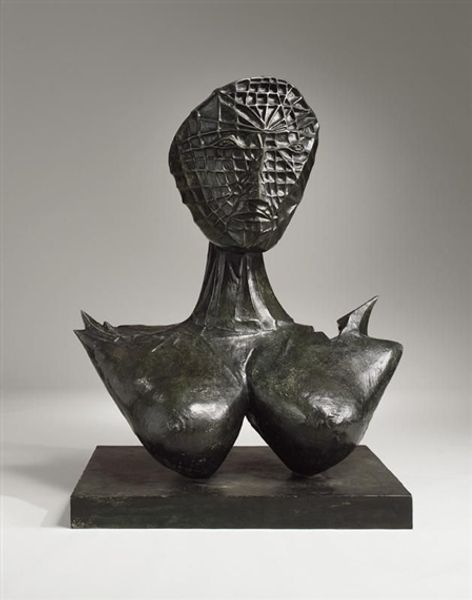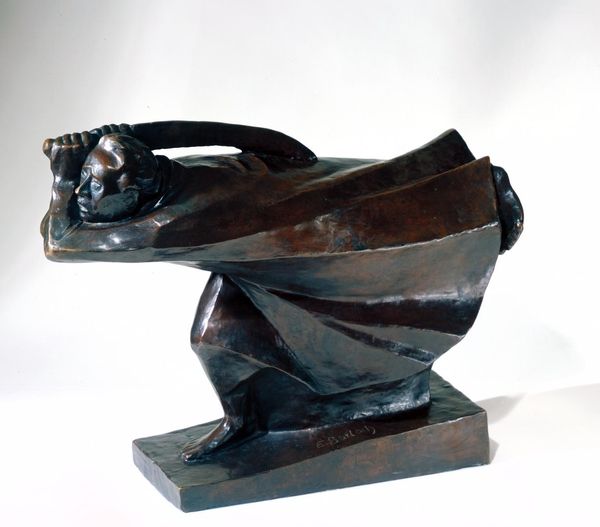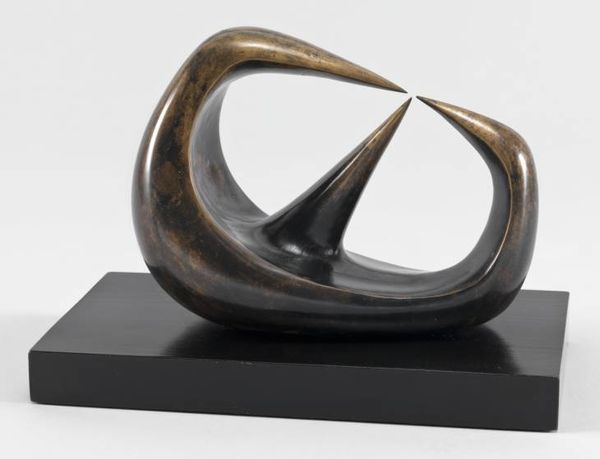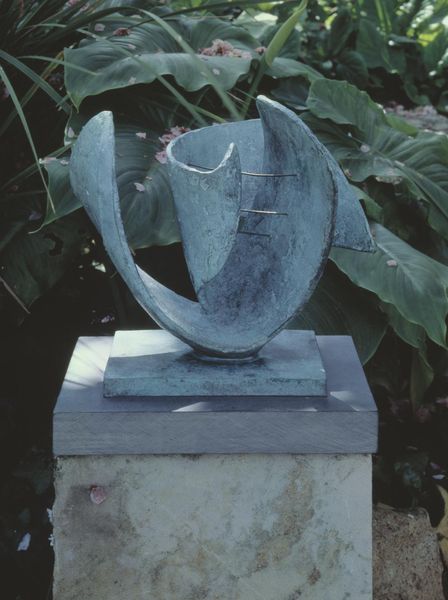
Copyright: Mathias Goeritz,Fair Use
Curator: Immediately, I’m struck by its simplicity. The golden interior practically glows, beckoning you closer. It’s inviting and a little mysterious, like a geode split open to reveal hidden treasures. Editor: Today, we're looking at "El Coco," a compelling bronze sculpture crafted by Mathias Goeritz in 1976. Its geometric forms suggest a minimalist approach, but the symbolic resonance feels profoundly layered. Curator: "El Coco" or "The Coconut." Yes, the name points to the recognizable—a familiar, natural form—but the highly polished inner space takes it into something completely otherworldly, like an egg containing the secret of existence itself. The rough exterior, by contrast, suggests time, the elements… Editor: Absolutely. The division, the breaking apart, presents us with a key symbol across cultures—duality, perhaps. There is a suggestion of unity disrupted, a space between what was once whole. The shadow cast by the division intensifies this drama of separation and reunion. It hints at concepts such as androgyny, or, according to your expertise, even something alchemic... Curator: It's precisely this kind of artistic alchemy that fascinates me. Goeritz, of course, famously blended spiritual concerns into his artistic projects. As a modernist artwork, its references could speak of a move from the solidity and simplicity of early Modernism towards complex and contradictory human experiences and philosophies, even back towards pre-modern symbologies. The piece's beauty rests in its capacity for simultaneous evocation. Editor: And the abstract nature gives the viewer immense freedom. You aren't forced into a rigid narrative. One might be contemplating fractured relationships, the challenges of sharing inner vulnerabilities, or even political divisions… though I wouldn't want to commit to that entirely! Curator: Though “El Coco” is very evocative, it still has the virtue of being inscrutable, to a certain extent. But thinking of Goeritz’s interest in the spiritual, maybe he wasn’t that keen on over-determining meaning... better, perhaps, to incite curiosity and thought! Editor: Agreed! It remains an invitation to ponder and to see beauty in separation. It feels both ancient and surprisingly fresh. I love it when art keeps asking me new questions.
Comments
No comments
Be the first to comment and join the conversation on the ultimate creative platform.
